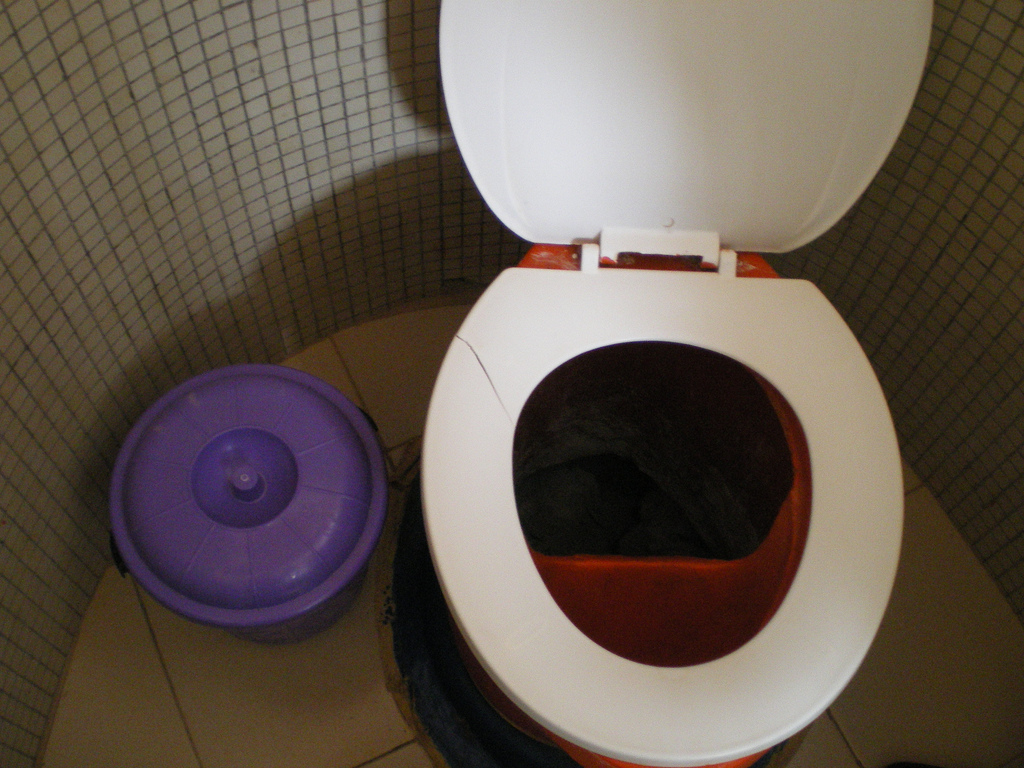After disaster strikes and we are cut off from a normal flow of resources our bodies are going to be under high levels of stress, the last thing we need is to expose ourselves and those around us to biological hazards when we are in a vulnerable state. One commonly overlooked aspect of preparation disaster preparedness is waste management. When the power is out and the faucets stop flowing, the toilet will also stop flushing. This could lead to unnecessary exposure to human waste which can lead to a multitude of diseases such as giardia, E. coli, hepatitis, typhoid, or cholera. While exposure to any of these pathogens could be potentially fatal under the best of conditions, death becomes a more likely result when we are cut off from medical resources, without clean drinking water, and under stress. Knowing how to deal with waste will greatly decrease our likelihood of exposure to potentially deadly pathogens.
Flushing it
If you are fortunate enough to be near water, even water that is not suitable for drinking, then you will want to consider the option of bringing some of that water to your location. This will enable you to flush a toilet even when water is not flowing. If you remove the back cover from your toilet and pour in the appropriate amount of water, most toilets display the amount necessary near the hinge of the toilet lid. Usually, 1.6 gallons is necessary, in dry areas many people have installed toilets that can flush effectively with only .8 gallons. This means that, for example, if you were to carry a 5-gallon bucket in each hand (carrying equal amounts on each side is easier than carrying a load in only one hand) you would be able to flush your toilet between 6 to 12 times.
Burying it
If water is not near you, but you have access to a piece of ground that you can dig in, then burying your waste is going to be your best bet. Do not wait until you need to go to dig your hole, this will lead you to hastily dig a shallow hole where ever you can. Instead find as good of a spot as you can and dig a trench that is at least 18” deep, 18” wide, and 10’ long. While digging, make a pile of the removed dirt along the side of the trench, this way as soon as you have used it, you can cover your waste with the fill dirt before flies have a chance to land. A trench this size should last one person over a week of use.
Bagging it
If you are in the unfortunate position of not being near water or having access to ground to bury your waste in, then you will need to bag your waste and carry it to where you can dispose of it. This option is not pretty, but if done properly it will be effective. Find a sturdy container like a bucket and stretch a bag over the rim like you would with a trash bag in a trash can. You can then squat over the container, but do NOT allow liquid waste into the bag if possible. Put all toilet paper in the bag, then seal the bag to the best of your ability. Next, carry it to any place that you can safely and cleanly dispose of it.
There is no way around it, but there are ways to plan effective and sanitary means of disposing of it.
If you liked this you might also like…
Last Resort Home Defense and More…
Natural Healing Secrets You Need to Know…
The Healthy Primal Diet Everyone Should Try…


